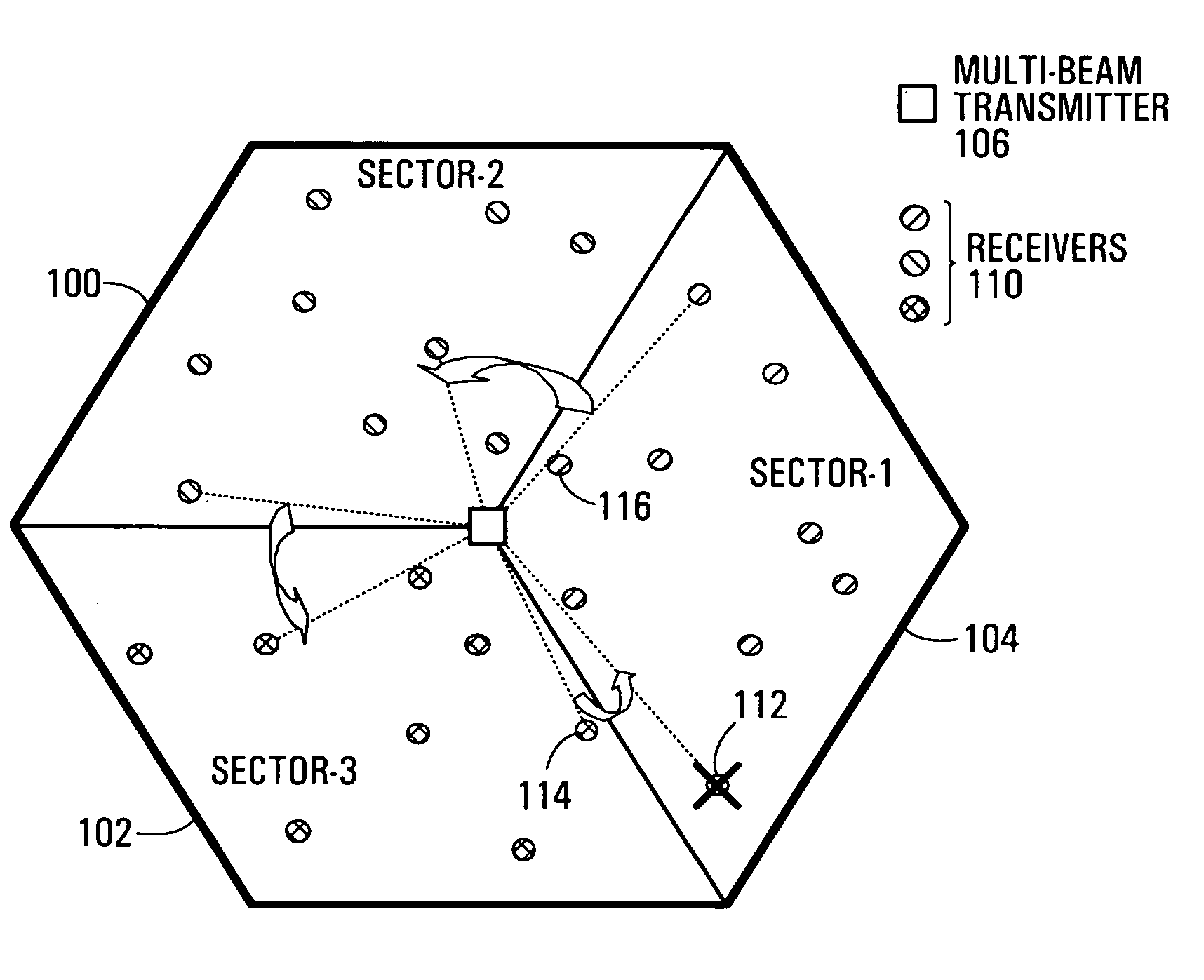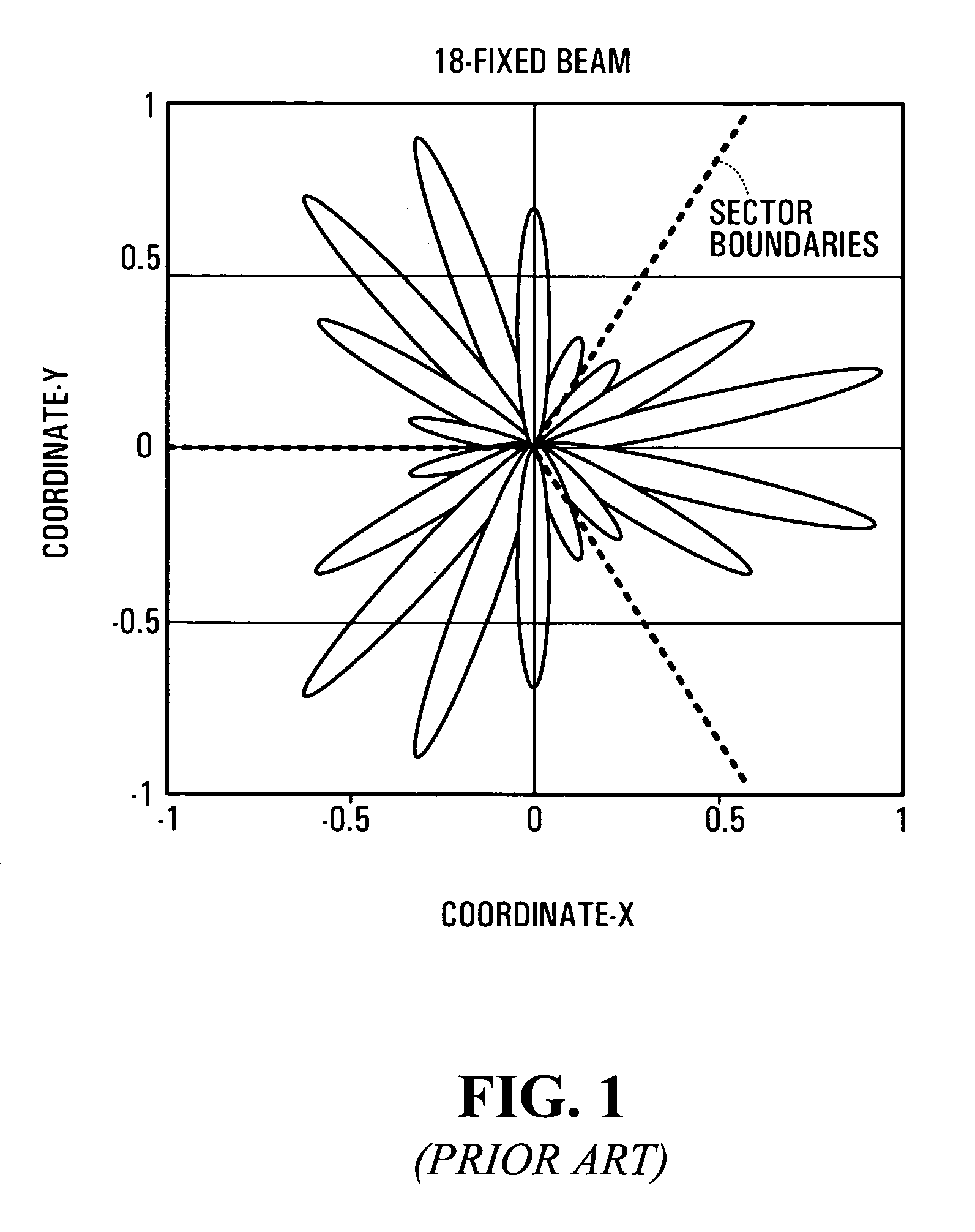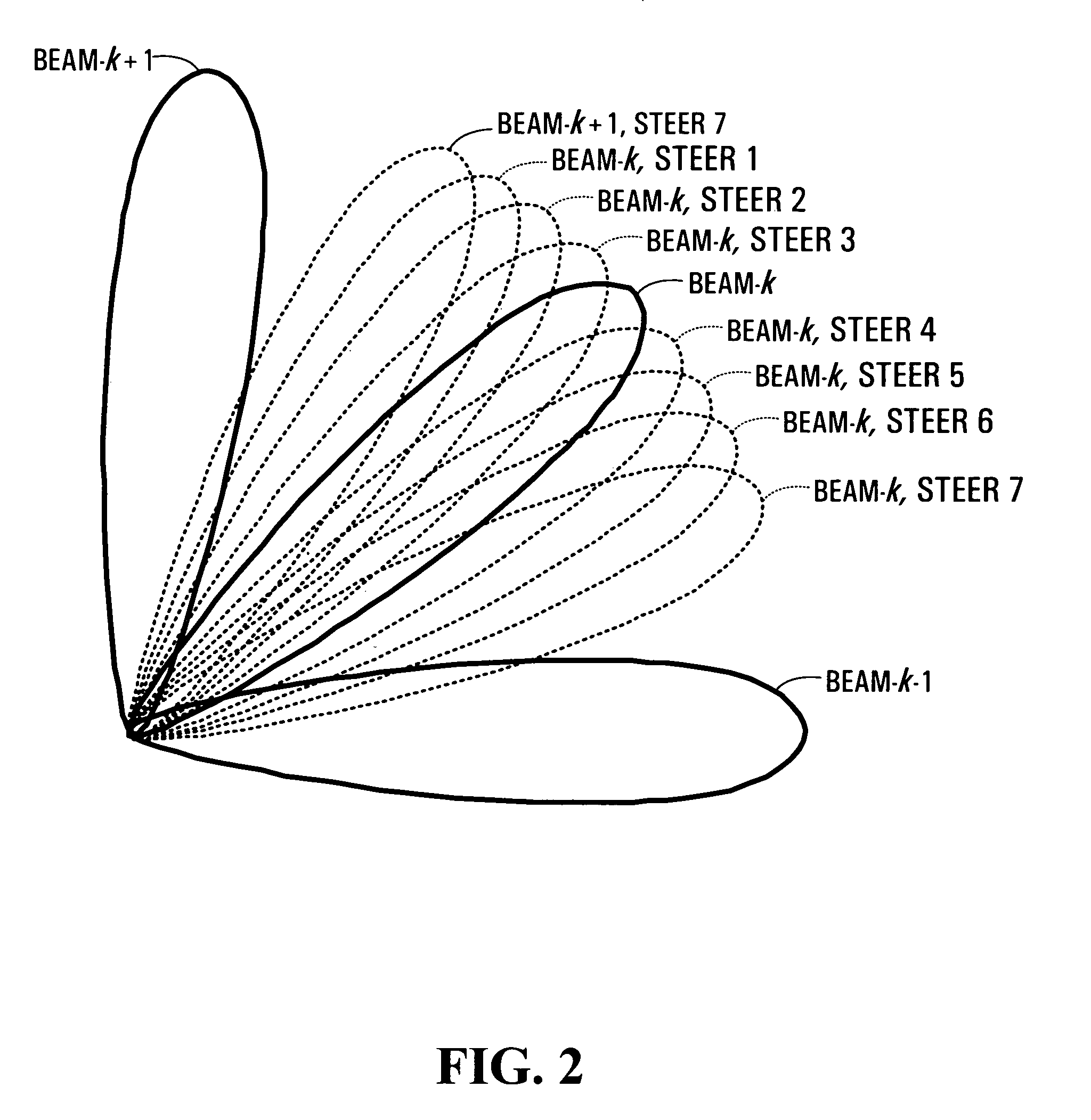System and method for scheduling transmission from multiple-beam transmitters
- Summary
- Abstract
- Description
- Claims
- Application Information
AI Technical Summary
Benefits of technology
Problems solved by technology
Method used
Image
Examples
Embodiment Construction
[0053]System performance with adaptive beamforming depends strongly upon a scheduler under multi-receiver conditions. This is because the adaptive beamformer has no knowledge to separate the receivers in space that may be very close each other. Receivers that are close each other and are scheduled at the same time could cause serious interference between each other. This in turn can have an effect on data transmission rates, and in particular may result in some receivers not achieving a specified minimum data transmission rate. To avoid such impacts on data transmission, a system and method for scheduling is provided which assigns such receivers in different time slots so as to improve the system capacity.
[0054]A method of scheduling transmission by a multi-beam transmitter to a plurality of receivers will now be described with reference to FIG. 4, which is a flowchart of a first method provided by an embodiment of the invention. The method begins at step 4-1 with the determination ...
PUM
 Login to View More
Login to View More Abstract
Description
Claims
Application Information
 Login to View More
Login to View More - R&D
- Intellectual Property
- Life Sciences
- Materials
- Tech Scout
- Unparalleled Data Quality
- Higher Quality Content
- 60% Fewer Hallucinations
Browse by: Latest US Patents, China's latest patents, Technical Efficacy Thesaurus, Application Domain, Technology Topic, Popular Technical Reports.
© 2025 PatSnap. All rights reserved.Legal|Privacy policy|Modern Slavery Act Transparency Statement|Sitemap|About US| Contact US: help@patsnap.com



